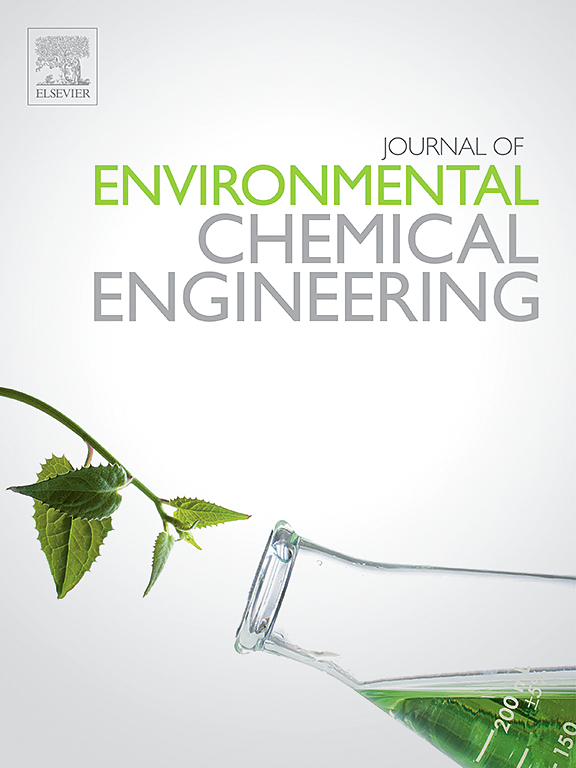Fenton oxidation remediation of petroleum-contaminated soil under high-quality development strategy: A review
IF 7.4
2区 工程技术
Q1 ENGINEERING, CHEMICAL
引用次数: 0
Abstract
The permeation of petroleum pollutants severely disrupts the soil ecology and poses a threat to human health. Although research on the Fenton oxidation technology for the remediation of petroleum-contaminated soil is relatively mature, in-depth exploration is still lacking against the backdrop of high-quality development strategies. This study obtained a knowledge map through visualization and co-occurrence analysis of keywords, revealing the temporal and spatial distribution, knowledge structure, and hot research trends, providing a new perspective for understanding the dynamics of the research field. This article compares liquid- and solid-phase iron-catalyzed Fenton oxidation technologies and finds that the solid-phase technology performs better in efficiently removing pollutants, reducing treatment time, lowering costs, and being more environmentally friendly, thereby highlighting its potential as a high-quality development strategy. Additionally, we delve into the key factors affecting the effectiveness of Fenton oxidation, such as the dosage of H2O2, pH, temperature, catalyst selection, and soil organic matter content, providing a scientific basis for the optimization of the technology. Finally, this study predicts the application prospects of the Fenton system in soil remediation and proposes forward-looking development directions, aiming to guide future research and practice, thereby promoting the innovation and application of Fenton oxidation technology in environmental remediation.
高质量发展战略下石油污染土壤的芬顿氧化修复:综述
石油污染物的渗透严重破坏了土壤生态环境,对人类健康构成威胁。虽然芬顿氧化技术修复石油污染土壤的研究相对成熟,但在高质量发展战略背景下,仍缺乏深入探索。本研究通过关键词的可视化和共现分析获得了知识图谱,揭示了该领域的时空分布、知识结构和研究热点趋势,为了解该研究领域的动态提供了新的视角。本文对液相和固相铁催化芬顿氧化技术进行了比较,发现固相技术在高效去除污染物、缩短处理时间、降低成本和更加环保方面表现更好,从而凸显了其作为高质量发展战略的潜力。此外,我们还深入研究了影响芬顿氧化效果的关键因素,如 H2O2 的用量、pH 值、温度、催化剂选择和土壤有机物含量等,为优化该技术提供了科学依据。最后,本研究预测了 Fenton 系统在土壤修复中的应用前景,并提出了前瞻性的发展方向,旨在指导未来的研究与实践,从而推动 Fenton 氧化技术在环境修复中的创新与应用。
本文章由计算机程序翻译,如有差异,请以英文原文为准。
求助全文
约1分钟内获得全文
求助全文
来源期刊

Journal of Environmental Chemical Engineering
Environmental Science-Pollution
CiteScore
11.40
自引率
6.50%
发文量
2017
审稿时长
27 days
期刊介绍:
The Journal of Environmental Chemical Engineering (JECE) serves as a platform for the dissemination of original and innovative research focusing on the advancement of environmentally-friendly, sustainable technologies. JECE emphasizes the transition towards a carbon-neutral circular economy and a self-sufficient bio-based economy. Topics covered include soil, water, wastewater, and air decontamination; pollution monitoring, prevention, and control; advanced analytics, sensors, impact and risk assessment methodologies in environmental chemical engineering; resource recovery (water, nutrients, materials, energy); industrial ecology; valorization of waste streams; waste management (including e-waste); climate-water-energy-food nexus; novel materials for environmental, chemical, and energy applications; sustainability and environmental safety; water digitalization, water data science, and machine learning; process integration and intensification; recent developments in green chemistry for synthesis, catalysis, and energy; and original research on contaminants of emerging concern, persistent chemicals, and priority substances, including microplastics, nanoplastics, nanomaterials, micropollutants, antimicrobial resistance genes, and emerging pathogens (viruses, bacteria, parasites) of environmental significance.
 求助内容:
求助内容: 应助结果提醒方式:
应助结果提醒方式:


